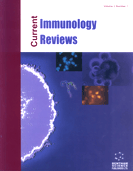Abstract
Several viruses have been suspected of causing or triggering vasculitis, with hepatitis B virus-associated vasculitis (HBV–AV; formerly and more usually known as HBV-related polyarteritis nodosa) and hepatitis C virusassociated cryoglobulinemic vasculitis (HCV–ACV) having the best-demonstrated and confident proof for a causal link with viruses. Evidence for the implication of other viruses in the pathogenesis of other primary systemic vasculitides, like Kawasaki or Behçet’s diseases, remains weak or controversial. However, human immunodeficiency virus (HIV), erythrovirus B19, cytomegalovirus, varicella-zoster virus or human T-cell lymphotropic virus-1 can induce some forms of vasculitis, which are mainly localized. Treatment for all these virus-associated vasculitides should be two-pronged: one to clear or at least control the viral infection, possibly with antiviral drugs when available; the other to rapidly control the clinical manifestations. Management of this second concomitant therapy is delicate and can rely on plasma exchange to clear immune complexes in HBV–AV or rituximab in HCV–ACV. Sometimes therapy must initially include short courses of corticosteroids, and cytotoxic agents for the most severe cases, both of which are potentially deleterious because they can hamper virus clearance and delay seroconversion.
Keywords: Corticosteroids, HBV–associated vasculitis, HCV–associated cryoglobulinemic vasculitis, HIV infection, plasma exchange, polyarteritis nodosa, Rituximab, vasculitis, virus.
 28
28

